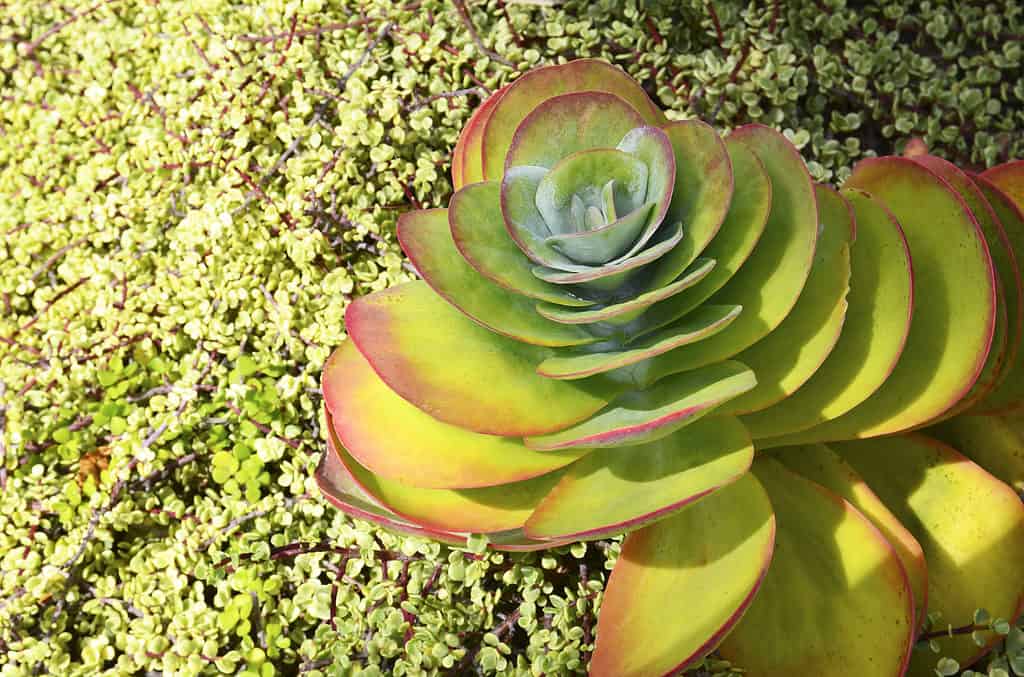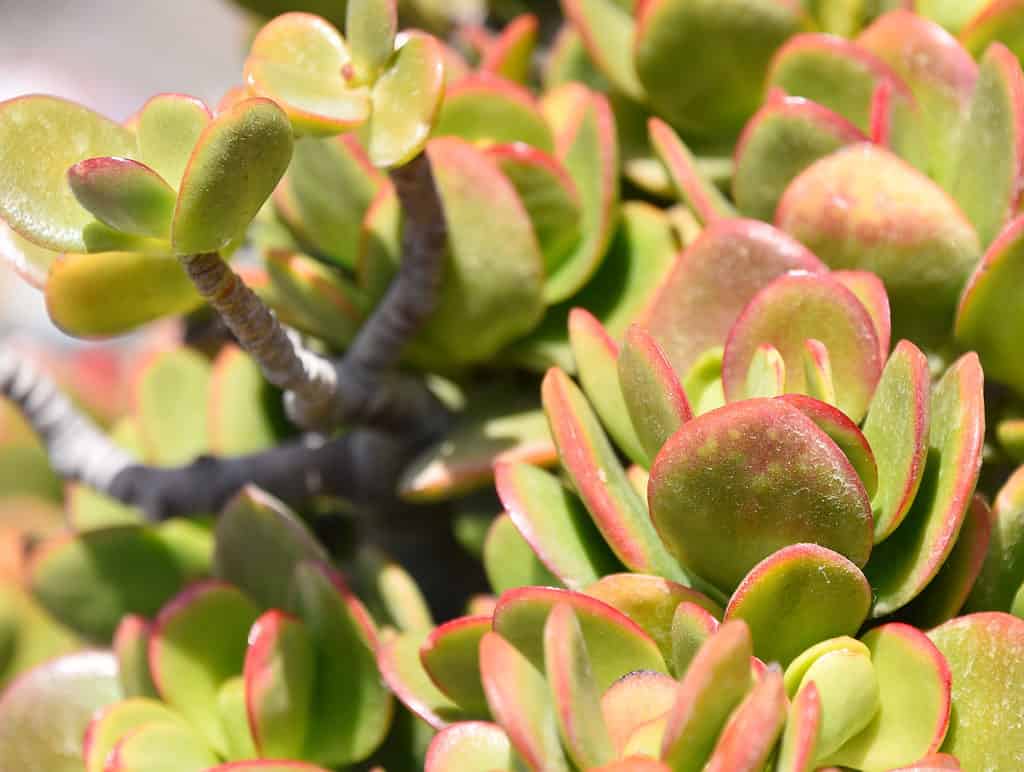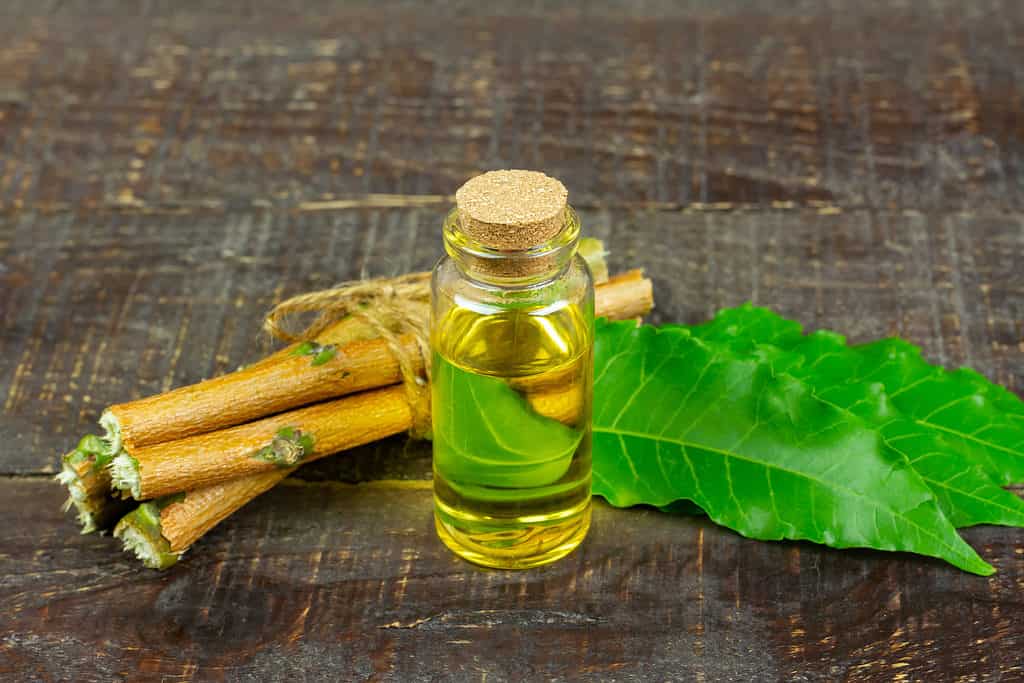As the name suggests, the flapjack plant resembles a stack of pancakes as its leaves stack one on top of another. It’s an interesting herbaceous succulent that can certainly add to the diversity of your plant collection.

The leaves appear stacked on top of each other, like a stack of pancakes.
©iStock.com/svf74
There are actually two species of succulent plants that usually carry the common name “flapjack plant” (or paddle plant): Kalanchoe thyrsiflora and Kalanchoe luciae.
The two species are often misidentified, even by companies and nurseries that sell the plants. It’s understandable why they are so easily mixed up, though. The two species look very similar and both are native to South Africa. Both also require virtually the same kind of care.
The one notable difference between the two is found in the flowers. The luciae will produce white flowers, while the thyrsiflora produces yellow flowers.
If the plant is in not in bloom, it will be difficult to ascertain the species. But if you do have a flapjack plant, blooming or not, it’s a pretty good bet that it’s a luciae. They are far more common than the rare thyrsiflora.
Regardless of which species you have (or hope to have), it is relatively easy to create conditions in which your flapjack plant can thrive.
| Flapjacks Plant Facts | |
|---|---|
| Botanical name | Kalanchoe luciae |
| Common Names | Flapjack plant, paddle plant, desert cabbage, red pancakes, and dog tongue. |
| Sunlight | Partial to full sun |
| Soil | Sandy, well-drained |
| Water | Every two weeks |
| Indoors or Outdoors | Indoors with access to an east-facing window. Outdoors in Zone 10 and above. |
Sunlight
Since the plant is native to South Africa, it’s not surprising that it thrives in dry, sunny conditions. But the harsh afternoon summer sun can scorch the leaves, so providing some shade during those hours can help this succulent thrive.
When provided with proper sunlight, flapjacks can display a gorgeous red hue.

With adequate sunlight, flapjacks can display a red hue.
©iStock.com/svf74
Soil Type
Drainage is the primary consideration when choosing a soil type for the flapjack plant. A prepackaged succulent or cactus mix is a great choice as it drains well and is also readily available.

A well-draining cactus or succulent mix is perfect for flapjack plants.
©iStock.com/naramit
If you are a do-it-yourselfer and would like to create your own, a loam mix works well.
Whatever soil mix you use, make sure the pot has adequate drainage holes. Terracotta pots work well since they help wick away moisture.
Water
As with most succulent plants, flapjacks require little water. Once every two weeks is usually sufficient, and even less than that in the winter months. Overwatering is a common issue with succulents, so a good rule of thumb is to check the top two inches of soil. If that top layer is not completely dry, hold off on watering.
Placement
When considering outdoor placement, remember that the flapjack plant is native to a hot, dry environment. It has no frost tolerance. In fact, if the temperature drops below 50°F, the plant should be moved indoors.
When growing indoors, place the flapjack near an east-facing window if possible. That will allow it to soak up the softer morning sunlight. Give the pot a quarter turn once a week to expose all sides of the plant to sunlight.
Whether outdoors or indoors, direct afternoon sun can scorch the plant.
And one final important consideration when placing this plant: all members of the Kalanchoe plant family are toxic to dogs and cats. Make sure your fur-babies can’t get to them.
Propagation
Note: gloves are highly recommended when handling flapjack plants, as the sap is a skin irritant.
The easiest way to propagate flapjacks is probably from seed. Plant the seed in succulent or cactus potting mix and keep it moist until it takes root.
It can also be propagated through offsets or cuttings.
For offset propagation, gently pull the offset away from the mother plant at the base and repot it using the same soil mixture.
To propagate using cuttings, wait until after the plant flowers in the spring or early summer. Choose a healthy steam and cut a three-inch piece that has leafed. Remove the bottommost leaves, but keep 2-4 of the top leaves on the stem.
Leave the cutting alone for a couple of days and let it form a callus. Then plant the cutting in a moist soil mix. The soil should reach up to the first leaves.
Place the cutting in indirect sunlight and keep the soil moist until it begins to grow. Then you can care for it just like the mother plant.
Whether you use seed, offsets, or cuttings, you may want to consider using a heat mat. The plant will take root more quickly if kept around 70°F.

Whether propagated through seed, offsets, or cuttings, young flapjacks begin growing relatively quickly.
©iStock.com/HHelene
Flowers
When fully mature, flapjacks bloom in the spring. The blooms have a sweet, perfumy scent and are magnets for pollinators.
It is a monocarpic plant, meaning the parent plant will die after flowering. But never fear! Offsets will take its place. Leave it planted and cut away any dead sections.
Common problems
Like most other succulents, the flapjack plant is hardy and resistant to many pests and diseases. But there are a few that can damage succulent plants, and flapjacks are vulnerable to them, as well.
Mealybugs are possibly the most common pests, as they are to most succulents. Aphids and spider mites can also be problematic.
Neem oil or insecticidal soap should rid your plant of these pests.

Neem oil is quite effective in ridding succulents of pests.
©iStock.com/Ninetechno
A problem even more common than pesky insects is overwatering. Too much moisture can lead to fatal root rot. It can also cause fungal diseases such as gray mold or powdery mildew.
But if you follow the watering schedule discussed earlier, you should have no problem growing, propagating, and enjoying this delightful succulent plant.
Up Next:
The photo featured at the top of this post is © iStock.com/MichelR45
Thank you for reading! Have some feedback for us? Contact the AZ Animals editorial team.






